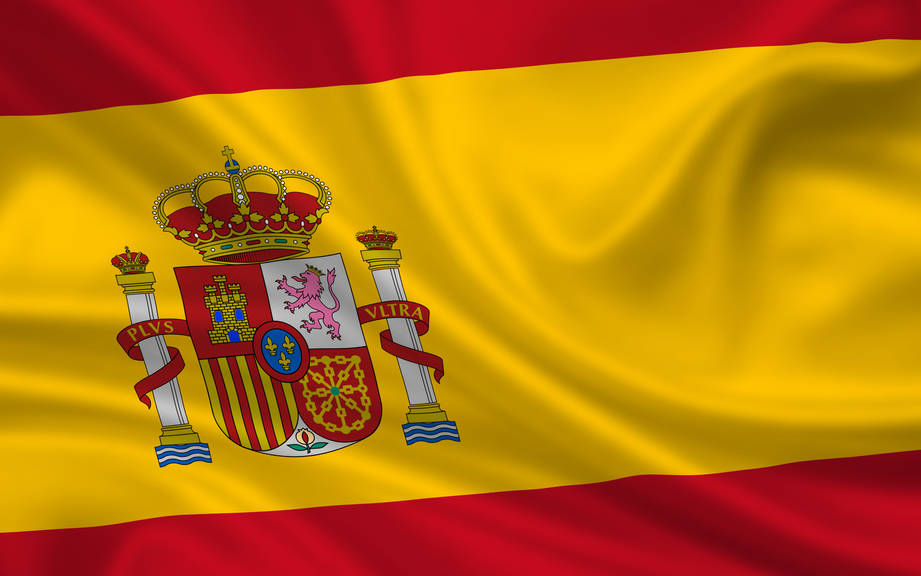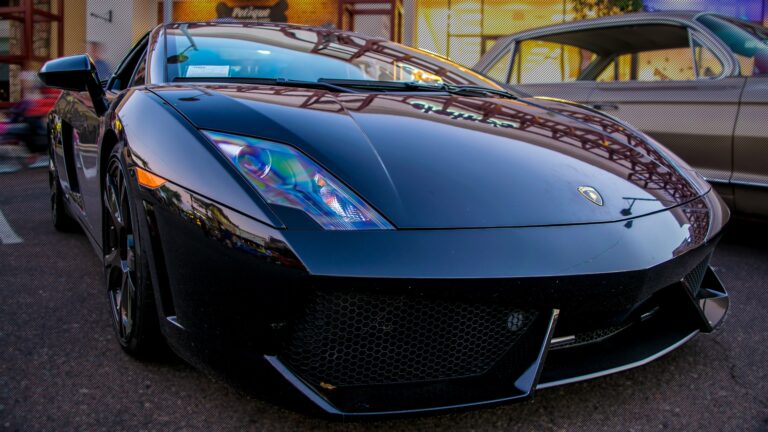Spanish Car Brands: A Comprehensive Guide to Automotive Innovation and Heritage
Spanish Car Brands: A Comprehensive Guide to Automotive Innovation and Heritage cars.truckstrend.com
When one thinks of European automotive powerhouses, Germany, Italy, and France often spring to mind, synonymous with engineering precision, artistic flair, and widespread accessibility. However, nestled on the Iberian Peninsula, Spain boasts a rich and often underestimated automotive heritage, characterized by a unique blend of passionate design, practical engineering, and a surprising foray into ultra-luxury and high-performance niche markets. Spanish car brands are more than just a footnote; they represent a vibrant segment of the global auto industry, offering everything from popular compacts to bespoke hypercars. This comprehensive guide will delve into the fascinating world of Spanish automotive, exploring its key players, distinctive characteristics, and what sets these brands apart.
The Giants of the Iberian Peninsula: SEAT
Spanish Car Brands: A Comprehensive Guide to Automotive Innovation and Heritage
No discussion of Spanish car brands can begin without acknowledging SEAT (Sociedad Española de Automóviles de Turismo), by far the most recognizable and prolific automotive manufacturer from Spain. Founded in 1950 by the Spanish government with assistance from Fiat, SEAT’s initial mission was to motorize the nation, bringing affordable cars to the masses. For decades, SEAT produced licensed Fiat models, establishing itself as a household name across Spain and beyond.
The pivotal moment in SEAT’s history came in 1986 when it was acquired by the Volkswagen Group. This acquisition marked a profound transformation, granting SEAT access to world-class German engineering, platforms, and technology, while allowing it to retain its distinctive Spanish identity. Under Volkswagen’s stewardship, SEAT evolved from a rebadged Fiat producer into a dynamic brand known for its youthful spirit, sporty design, and engaging driving dynamics.
Today, SEAT positions itself as a brand for the young-at-heart, focusing on design, connectivity, and a spirited driving experience. Its current lineup is diverse, catering to various market segments:
- Ibiza: A perennial bestseller, the Ibiza supermini is known for its stylish design, agile handling, and urban practicality, making it a favorite among young drivers and city dwellers.
- Leon: SEAT’s flagship compact car, the Leon, competes fiercely in the highly competitive C-segment. Available as a hatchback and an estate (Sportstourer), it combines sharp styling with advanced technology and a refined driving experience, often sharing platforms and engines with the VW Golf and Audi A3.
- Arona, Ateca, and Tarraco: Reflecting the global shift towards SUVs, SEAT has successfully expanded its range with a trio of popular crossovers. The Arona is a compact urban SUV, the Ateca is a versatile mid-size SUV, and the Tarraco is a larger 7-seater SUV, each offering a blend of practicality, style, and elevated driving positions.

SEAT has also embraced the future of mobility, introducing electrified models like the SEAT Mii Electric and playing a significant role in the Volkswagen Group’s electric vehicle strategy. Its strength lies in its ability to offer well-engineered, stylish, and value-for-money vehicles, backed by the reliability and extensive dealer network of the Volkswagen Group.
The Performance Pedigree: CUPRA
Emerging from SEAT’s rich performance heritage is CUPRA, a brand that has rapidly carved out its own distinct identity. "Cupra" was originally a trim level within SEAT’s lineup, denoting the sportiest, most performance-oriented versions of models like the Ibiza and Leon. Derived from "Cup Racing," it symbolized the brand’s motorsport prowess and commitment to exhilarating driving.
In 2018, the Volkswagen Group made a strategic decision to spin off CUPRA into a standalone brand. This move allowed CUPRA to transcend its "hot SEAT" origins and establish itself as a unique entity focused on unconventional performance, sophisticated design, and a contemporary lifestyle. CUPRA aims to attract a different kind of customer – one who values bold aesthetics, cutting-edge technology, and a more emotional connection to their vehicle, without necessarily seeking outright track performance above all else.
CUPRA’s current model range showcases this new direction:

- Formentor: The brand’s first standalone model, the Formentor is a high-performance crossover SUV that perfectly embodies CUPRA’s design philosophy. Its sleek, coupé-like profile, distinctive copper accents, and powerful engines (including plug-in hybrid options) make it a standout in its segment.
- Leon: Available in both hatchback and Sportstourer (estate) forms, the CUPRA Leon takes the SEAT Leon’s excellent platform and elevates it with more aggressive styling, higher performance engines, sport-tuned suspension, and premium interior finishes.
- Born: CUPRA’s first all-electric model, the Born, is a sporty hatchback built on the Volkswagen Group’s MEB platform. It combines sustainable mobility with CUPRA’s signature driving dynamics and bold design, proving that electric cars can be exciting and stylish.

CUPRA’s journey as an independent brand has been marked by rapid growth and a clear vision. It participates in electric motorsport, further solidifying its performance credentials, and continues to push boundaries in design and technology, positioning itself as a modern, performance-oriented lifestyle brand.
The Luxury and Niche Players: Unveiling Spain’s Automotive Artisanry
Beyond the mass-market success of SEAT and the burgeoning performance segment of CUPRA, Spain is also home to an exclusive realm of luxury and niche car manufacturers. These brands operate at the extreme end of the automotive spectrum, producing highly specialized, often hand-built vehicles for a discerning clientele who prioritize exclusivity, bespoke craftsmanship, and unparalleled performance.
Hispano-Suiza: A Legend Reborn
One of the most storied names in automotive history, Hispano-Suiza, is a Spanish-Swiss marque with roots dating back to 1904. In its heyday during the early 20th century, Hispano-Suiza was synonymous with ultra-luxury, engineering excellence, and groundbreaking innovation. Its cars were celebrated for their powerful engines, exquisite craftsmanship, and elegant designs, rivaling marques like Rolls-Royce and Bugatti. The company also made significant contributions to aviation, producing highly successful aircraft engines.
After decades of dormancy in the automotive world, Hispano-Suiza made a spectacular return in 2019 with the Carmen, an all-electric hypercar that pays homage to the brand’s opulent past while embracing cutting-edge technology. The Carmen, and its more powerful variant, the Carmen Boulogne, are ultra-exclusive vehicles with futuristic designs inspired by the classic Hispano-Suiza Dubonnet Xenia. Hand-built in Barcelona, these electric hypercars boast immense power (over 1,000 horsepower), breathtaking acceleration, and a level of bespoke customization typically found only in the most exclusive art pieces. The Carmen represents the pinnacle of Spanish automotive luxury and innovation, targeting the world’s most discerning collectors.
Tramontana: The Road-Legal Fighter Jet
For those seeking an automotive experience that blurs the lines between a car and a fighter jet, Tramontana offers a truly unique proposition. Based in Girona, Catalonia, Tramontana hand-builds extreme supercars that defy conventional categorization. Their vehicles are characterized by an open-wheel, tandem two-seat configuration, giving them the appearance of a road-legal Formula 1 car or a futuristic single-seater fighter plane.
Each Tramontana model, such as the Tramontana R or XTR, is a bespoke creation, meticulously crafted from lightweight materials like carbon fiber and aerospace-grade aluminum. Powered by powerful V12 or V10 engines, these machines deliver ferocious performance and an unadulterated driving experience. Tramontana caters to an extremely niche market of enthusiasts and collectors who demand ultimate exclusivity, uncompromising performance, and a car that is as much a work of art as it is a vehicle.
Spania GTA: Supercar with Spanish Flair
Spani GTA, based in Valencia, is another prominent player in Spain’s high-performance automotive landscape. The company specializes in the design and manufacture of high-performance supercars, with its flagship model being the Spani GTA Spano.
The Spano is a limited-production supercar known for its distinctive, aggressive styling and advanced engineering. It utilizes a lightweight chassis constructed from carbon fiber, titanium, and graphene, ensuring exceptional rigidity and a low curb weight. Power comes from a twin-turbocharged V10 engine, delivering immense horsepower and blistering acceleration figures. Each Spano is highly customizable, allowing owners to personalize their vehicle to an extraordinary degree. Spania GTA embodies the passion and engineering ambition to create world-class supercars that can compete with the best from Italy and Germany, bringing a unique Spanish flair to the hypercar segment.
Other Notable Mentions: Pegaso
While no longer producing cars, Pegaso holds an important place in Spanish automotive history. Primarily known for its trucks and buses, Pegaso briefly entered the luxury sports car market in the 1950s with the Z-102. Designed by the visionary Wifredo Ricart, the Z-102 was a technological marvel for its time, featuring a sophisticated DOHC V8 engine and advanced chassis design. Though only a small number were built, the Z-102 demonstrated Spain’s engineering prowess and design ambition on the international stage.
Key Characteristics of Spanish Car Brands
Spanish car brands, despite their diverse market segments, share certain underlying characteristics that reflect the nation’s culture and industrial approach:
- Passionate Design: Whether it’s the sharp lines of a SEAT Leon, the bold presence of a CUPRA Formentor, or the intricate artistry of a Hispano-Suiza Carmen, Spanish cars often exude an emotional, passionate design language. They tend to be less conservative than some German counterparts and more expressive.
- Sporty Dynamics (Even in Mainstream): There’s a clear emphasis on driving enjoyment. SEAT vehicles, even standard models, are often praised for their engaging handling and spirited performance. CUPRA elevates this to a core brand identity, and the niche players are, by definition, extreme performance machines.
- Innovation and Technology: While SEAT and CUPRA benefit immensely from Volkswagen Group’s R&D, they also contribute to it and adopt the latest technologies, especially in connectivity and electrification. The niche brands, on the other hand, push the boundaries of materials science and bespoke electric powertrains.
- Value Proposition (for Mass Market): SEAT consistently offers a compelling value proposition, providing well-equipped, stylish, and reliable cars at competitive prices.
- Exclusivity and Craftsmanship (for Niche Market): For brands like Hispano-Suiza, Tramontana, and Spania GTA, the focus shifts entirely to extreme exclusivity, hand-built craftsmanship, and bespoke personalization, catering to a clientele that views cars as rolling works of art.
Practical Advice for Prospective Buyers
Considering a Spanish car brand? Here’s some practical advice tailored to different segments:
For SEAT and CUPRA:
- Test Drive: Both brands offer engaging driving experiences. A test drive is crucial to appreciate their handling and performance characteristics.
- Budget & Needs: SEAT offers excellent value for money across its range, suitable for various budgets and family sizes. CUPRA commands a premium for its enhanced performance and distinctive styling.
- Technology & Features: Leverage the Volkswagen Group’s extensive technology. Both brands offer advanced infotainment, driver-assistance systems, and efficient powertrains (including hybrids and EVs).
- Reliability & After-Sales: As part of the VW Group, SEAT and CUPRA benefit from established reliability, widespread dealer networks, and readily available parts and service, making ownership straightforward.
- Resale Value: Generally strong, especially for popular models, thanks to the VW Group backing and brand appeal.
For Hispano-Suiza, Tramontana, and Spania GTA:
- Extreme Costs & Exclusivity: Be prepared for multi-million Euro price tags. These are ultra-exclusive vehicles, often produced in single-digit or very limited series.
- Bespoke Ownership: The purchasing process is highly personalized, involving direct interaction with the manufacturer for customization and specification.
- Maintenance & Servicing: Expect highly specialized, often factory-direct, maintenance requirements. This is not for the faint of heart or budget.
- Investment & Collectibility: These vehicles are often purchased as investments or collector’s items rather than daily drivers. Their value can fluctuate significantly based on rarity, historical significance, and market demand.
- Limited Availability: Acquiring one typically involves a waiting list and a specific invitation or connection.
Price Table: Representative Ranges for Spanish Car Brands
It’s important to note that prices are approximate and can vary significantly based on trim levels, optional extras, regional taxes, and market conditions. Niche brands are often custom-quoted.
| Brand | Model | Category | Starting Price (EUR) | Key Feature/Notes |
|---|---|---|---|---|
| SEAT | Ibiza | Supermini | €16,000 | Urban, economical, stylish compact |
| Leon | Compact Hatch/Estate | €22,000 | Versatile, tech-laden, sporty family car | |
| Arona | Compact SUV | €19,000 | Urban crossover, practical, elevated driving | |
| Ateca | Mid-Size SUV | €26,000 | Family-friendly, balanced performance | |
| Tarraco | Large SUV | €33,000 | 7-seater, spacious, premium feel | |
| CUPRA | Formentor | Crossover SUV | €35,000 | First standalone model, sporty, unique design |
| Leon | Performance Hatch/Estate | €38,000 | Higher performance, aggressive styling | |
| Born | Electric Hatch | €40,000 | First EV, dynamic, sustainable performance | |
| Hispano-Suiza | Carmen | Electric Hypercar | €1,600,000+ | Ultra-exclusive, bespoke, hand-built electric luxury |
| Carmen Boulogne | Electric Hypercar | €1,800,000+ | More powerful, track-focused version of Carmen | |
| Tramontana | R / XTR | Hypercar | €500,000+ | Road-legal F1 aesthetic, extreme performance |
| Spani GTA | Spano | Supercar | €800,000+ | Limited production, carbon fiber, high power |
Disclaimer: Prices are approximate and subject to change based on trim, options, and market. Niche brand prices are often custom-quoted and highly variable.
Concluding Summary
The world of Spanish car brands is far more diverse and captivating than many realize. From SEAT’s democratic appeal and CUPRA’s bold performance statements to the rarefied air of Hispano-Suiza, Tramontana, and Spania GTA, Spain offers a rich tapestry of automotive experiences. These brands collectively showcase a national passion for design, a commitment to engineering excellence, and a willingness to push boundaries, whether in mass-market accessibility or ultra-exclusive craftsmanship.
As the automotive industry continues its transformative journey towards electrification and autonomous driving, Spanish brands are poised to play an exciting role. SEAT and CUPRA are leveraging the Volkswagen Group’s vast resources to innovate in sustainable mobility, while Hispano-Suiza is redefining luxury in the electric age. Spain’s automotive landscape is vibrant, offering something truly distinctive for every type of enthusiast, proving that the heart of automotive passion beats strongly on the Iberian Peninsula.
Frequently Asked Questions (FAQ) about Spanish Car Brands
Q1: What is the most famous Spanish car brand?
A1: SEAT (Sociedad Española de Automóviles de Turismo) is by far the most famous and largest Spanish car brand, known for its popular range of compact cars and SUVs.
Q2: Are Spanish cars reliable?
A2: For SEAT and CUPRA, yes. Since both brands are part of the Volkswagen Group, they benefit from German engineering, platforms, and quality control, making them generally reliable and well-built. The niche luxury brands are hand-built with extreme attention to detail, though their specialized nature means maintenance is highly specific.
Q3: Is CUPRA part of SEAT?
A3: CUPRA originated as SEAT’s performance division. In 2018, it was spun off into an independent brand within the Volkswagen Group. While it shares some heritage and platforms with SEAT, CUPRA now has its own distinct brand identity, design language, and model lineup.
Q4: Are there any Spanish luxury car brands?
A4: Yes, absolutely. Hispano-Suiza (now producing ultra-exclusive electric hypercars), Tramontana (known for its extreme, hand-built hypercars), and Spani GTA (producer of the high-performance Spano supercar) are prominent Spanish luxury and niche car manufacturers.
Q5: Do Spanish car brands sell outside of Spain?
A5: Yes. SEAT and CUPRA have a strong presence across Europe and in many international markets. The luxury and niche brands like Hispano-Suiza, Tramontana, and Spania GTA produce extremely limited numbers of vehicles that are sold globally to a very exclusive clientele, often through direct sales or specialized dealers.
Q6: What makes Spanish car design unique?
A6: Spanish car design often emphasizes passion, emotion, and dynamic lines. While SEAT and CUPRA incorporate modern European design trends, they often feature sharper creases, more aggressive stances, and a youthful, spirited character compared to some competitors. Niche brands push boundaries with avant-garde and highly sculptural forms.
Q7: Are there electric Spanish cars?
A7: Yes. SEAT has offered electric versions of some models (like the Mii Electric), and CUPRA has fully embraced electrification with its dedicated electric model, the Born. Hispano-Suiza’s modern revival is centered entirely around ultra-luxury electric hypercars like the Carmen.




